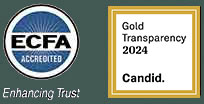One sign of a healthy church is its willingness and ability to send out more healthy churches with a built-in DNA to repeat the process. As our church plant began maturing as a sending church, our leadership team considered four key questions to help us make the transition to planting:
- How are we creating a sending culture?
- When is the right time?
- Who is the right church planter?
- What is the best way?
In Part 1 and Part 2, we explored a culture of sending, the timing of sending, and the character of the one sent. Now we’ll survey a few methodologies for planting a healthy church to help ask the last question: what is the best way?
Saying that, there is no one right model. Having a plan is important, but it must be held with an open hand. The “best” way will look different for every church; it will vary with your context, governance structure, and the giftings of the planting pastor and his core team.
Model #1: Traditional
Traditionally, a church identifies a planter from within their congregation (or brings him in from outside) and walks through a residency process. The lead planter is assessed, apprenticed, and prepared to start a new work. A temporary mother-daughter relationship often exists between the sending church and the new church as the mother church funds and supports the daughter church until she becomes self-sustaining.
One sign of a healthy church is its willingness and ability to send out more healthy churches with a built-in DNA to repeat the process. Click To TweetCommunication is vital here; if in doubt, err on the side of over-communication. Assumptions are the enemy in every leadership team or important work, and church planting is no different. If you’re being sent out of a mother church, from which you have been permitted to build a launch team, make the process better for everyone through clear and continual communication. Speak with the sending church’s leadership about who you would like to recruit. And if people approach you intending to join your core group, minimize surprises to the sending church by communicating who they are.
Planting Liberti Church was a blend of the traditional model with a parachute drop (which we’ll look at next). Our family moved from across the world—but to a city where we already had relationships and connections. Some generous friends from another church covered my salary for three months and allowed us to plant out of their church by encouraging anyone who wanted to go with us.
Model #2: The Parachute Drop
The parachute drop—likely the most challenging planting pathway—is similar to the traditional model of church planting but involves relocating to an entirely different context. Usually, this means a smaller core group (if any) going with you from the sending church, fewer connections in the area, and a slower growth rate. It’s much like the process for foreign missionaries.
Planters who opt for this pathway have a strong sense of calling to a particular place and are willing to pay the cost of seeing a gospel outpost established there. They’re often bivocational to some degree. The risk is high, yet the reward is great. These church-planting families learn to trust God in deeper ways than they ever have before.
One of the many benefits of being part of a network like Acts 29 is partnership in church planting, even when we’re not personally doing the sending ourselves. Click To TweetThose who choose to “ride the lightning” of a parachute drop ought to do everything they can to plant with at least a small team. The loneliness of church planting is real, and a few trusted friends will be wind in your sails during the inevitable tough times. When we parachuted back into Australia after living in the USA, we were fortunate to have a solid core of friends willing to jump in with both feet to the work of planting Liberti Church. With quick growth and the birth of newborn twins into our family just six weeks after our public launch, only God knows how important these relationships were during the difficult first year as a new church. As the ancient proverb says, “If you want to go fast, go alone. If you want to go far, go together.”
Model #3: Family of Churches/Multisite
Multichurch: Exploring the Future of Multisite (Brad House & Gregg Allison) is an excellent resource that explores multisite models from highly centralized to highly decentralized. This model has many benefits. It can frequently include hiving off a cluster of people who live near one another and eventually become a larger core group. Having a core of mature, disciple-making, financially contributing followers of Jesus already on mission in their community as the church’s founding members can relieve many of the inherent pressures.
(Figure from MultiChurch, p.50)
We embrace this model at Liberti. Rather than having one large mega-gathering, we see our collective as an evangelistic strategy for saturating our city with the gospel. While we relish opportunities to send out non-Liberti church plants, we also know that these will statistically be a smaller team since people are usually less eager to leave their church and relationships. Because there is generally a good level of trust with the leadership and culture, planting a “Liberti Church” tends to have a higher level of buy-in from potential core group members. We saw this when over 50 people put their hands up to be part of our first church plant.
Churches that plant with this model need to have high levels of trust between each lead pastor and a willingness to adapt or even abandon their model if it becomes a hindrance to fruitful ministry. Structures exist to serve God’s mission, not the other way around. From the beginning, we implemented an off-ramp: if, after five years, a Liberti church is self-governing with a plurality of elders, financially self-sustaining, and it seems good to them to become a stand-alone church, this is a good thing! It’s not about our model, and it’s certainly not about our name. It’s about the glory of Jesus being made known anywhere and everywhere.
Gospel-Motivated Intentionality
The same Jesus who sends us (John 20:21) promises to be with us (Matt. 28:20). A church can embrace the holy sacrifice of maturing toward becoming a sending church only on this firm foundation.
Being a church-planting church is far more an ongoing posture of missional intention than a one-time act of sending. Click To TweetAnd to be clear, being a church-planting church is far more an ongoing posture of missional intention than a one-time act of sending. One of the many benefits of being part of a network like Acts 29 is partnership in church planting, even when we’re not doing the sending ourselves. During such seasons—through prayer, encouragement, collaboration, and financial support—we partner with churches who are sending.
Whether we plant one church or one hundred, and whether it takes five years or fifty . . . in light of the Great Commission of our risen King, every pastor and elder team ought to be asking themselves, “What is the next step we can take toward sending out another healthy church plant?”










